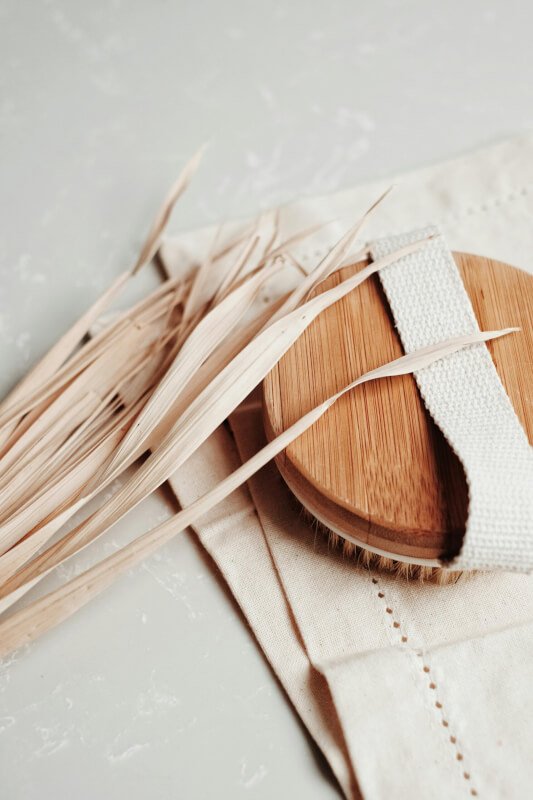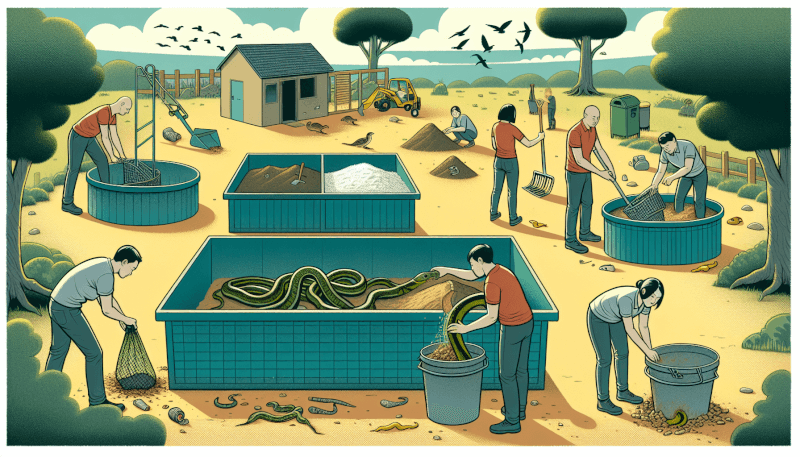Have you ever wondered what to do with snake waste when you come across it in your environment? It’s important to know the best ways to handle and dispose of this waste to not only keep yourself safe, but also help maintain a clean and healthy ecosystem. In this article, we will explore some effective methods for handling and disposing of snake waste, providing you with practical tips for maintaining a harmonious coexistence with these fascinating creatures. So let’s dive in and discover the best practices for dealing with snake waste in their environment!
Methods of Handling Snake Waste
Gloves and Protective Gear
When it comes to handling snake waste, one of the first methods to consider is using gloves and other protective gear. This is crucial for your safety and hygiene. By wearing gloves, you can minimize direct contact with the waste and reduce the risk of exposure to any potential pathogens or parasites that may be present.
Using Tongs or Grabbers
Another effective method is using tongs or grabbers to handle snake waste. These tools allow you to pick up the waste without actually touching it, providing an added layer of protection. Tongs or grabbers with a serrated edge are especially useful for securely grasping the waste and preventing any accidental spills or messes.
Bagging or Containing the Waste
Bagging or containing snake waste is a practical method to prevent any potential contamination. Using sealable bags or containers specifically designed for waste disposal ensures that the waste is securely contained and won’t leak or spread any unpleasant odors. Be sure to choose bags or containers that are strong enough to withstand punctures or tears.
Avoiding Direct Contact with the Waste
While gloves, tongs, and containers are effective in handling snake waste, it’s always a good practice to avoid direct contact with the waste whenever possible. This means being cautious and mindful when cleaning the snake enclosure or removing waste. By keeping a safe distance and minimizing unnecessary contact, you can reduce the risk of any potential hazards.
Disposing of Snake Waste
Composting
Composting is an environmentally friendly method of disposing snake waste, as it allows for the breakdown of organic material into nutrient-rich soil. Before considering this method, it’s essential to research and understand the specific regulations and requirements in your area. Composting snake waste requires a carefully managed compost bin or pile, as well as regular turning and monitoring.
Burying
Burying snake waste is another viable option for disposal. Selecting an appropriate burial site away from any water sources or areas with high foot traffic is crucial. Dig a hole deep enough to prevent any scavengers from accessing the waste. Place the waste in the hole, cover it with soil, and mark the site to ensure it is not disturbed. Burying snake waste allows for natural decomposition and returns nutrients to the soil.
Incinerating
Incineration is a straightforward method that involves burning snake waste completely. It requires an outdoor burner or incinerator specifically designed for waste disposal. Before incinerating, ensure you comply with local regulations and obtain any necessary permits. Safely burn the waste, taking precautions to prevent the spread of ashes or odors. Proper disposal of the resulting ashes is also essential.
Recycling
Recycling snake waste may not be a conventional option, but it is worth considering. Research potential recycling methods and reach out to waste management facilities to explore any existing programs or opportunities. It’s important to ensure that the waste meets any recycling requirements and standards. Tracking and reporting recycling efforts can also contribute to greater awareness and sustainability.
Hiring Professional Waste Disposal Services
For those who prefer to leave the handling and disposal of snake waste to the experts, hiring professional waste disposal services is a reliable option. Research and select a reputable service that specializes in handling animal waste. Understand the service’s policies and processes, ensuring they adhere to proper waste management practices. Schedule waste pickup and ensure proper disposal and documentation.

Preventing Snake Waste Accumulation
Regular Cleaning and Maintenance
Preventing snake waste accumulation starts with regular cleaning and maintenance of the snake enclosure. This includes removing waste promptly and thoroughly sanitizing the enclosure using reptile-safe cleaning products. Establishing a cleaning schedule and sticking to it helps maintain a clean and hygienic environment for both you and your snake.
Using Reptile-Specific Substrates
Choosing suitable substrates for snake enclosures can greatly reduce the accumulation of waste. Reptile-specific substrates, such as coconut fiber, newspaper, or reptile carpet, offer easy cleanup and absorption properties. Avoid using sand, gravel, or loose substrates that can retain waste and promote bacterial growth. Monitoring and replacing substrates as needed will ensure cleanliness and prevent odor buildup.
Providing Adequate Space for Snakes
Adequate space and appropriate enclosure size are essential for preventing snake waste accumulation. When snakes are kept in cramped or undersized enclosures, waste accumulation can become a significant issue. Providing enough space for snakes to move and explore not only promotes their well-being but also reduces the likelihood of waste buildup in a confined area.
Feeding Snakes Appropriately
Feeding snakes an appropriate diet and managing feeding schedules can also help prevent excess waste. Improper feeding practices or overfeeding can result in larger quantities of waste. Consult with a reptile veterinarian or knowledgeable snake owner to determine the optimal feeding regimen for your snake’s species and size.
Safety Measures when Handling Snake Waste
Wearing Proper PPE
Safety should be a top priority when handling snake waste. Wearing proper personal protective equipment (PPE) is crucial. This includes gloves, protective eyewear, and a mask or face shield to prevent any potential contamination or injury. Ensure that the PPE fits well and is of high quality to provide adequate protection.
Avoiding Touching the Face or Mouth
When handling snake waste, it’s essential to avoid touching your face or mouth to prevent the transfer of any potential pathogens or parasites. This can be challenging, especially if you’re not accustomed to wearing PPE. Stay mindful of this precaution and resist the urge to inadvertently touch your face or mouth during the waste handling process.
Washing Hands Thoroughly
Proper hand hygiene is a vital safety measure to prevent the spread of any contaminants. After handling snake waste or removing PPE, wash your hands thoroughly with soap and water for at least 20 seconds. Pay extra attention to areas like the fingertips, palms, and wrists. Hand sanitizers can be used when soap and water are not readily available.
Disinfecting Tools and Equipment
Disinfecting tools and equipment used for handling snake waste is essential to maintain cleanliness and prevent cross-contamination. After each use, clean the tools with a disinfectant specifically designed for animal waste. Pay close attention to the areas that came into contact with the waste to ensure thorough disinfection. Regularly check and replace any worn-out or damaged tools.

Composting Snake Waste
Choosing a Composting Method
When composting snake waste, there are various methods to choose from, such as traditional composting, vermiculture (using worms), or bokashi composting. Consider the available space, resources, and local regulations to determine which method suits your needs best.
Creating the Compost Bin
To compost snake waste, create a compost bin that allows for proper airflow and drainage. Use a container made of sturdy and non-toxic materials, ensuring it is large enough to accommodate the waste and allow for turning. Place the bin in a location that is easily accessible but away from areas with heavy foot traffic.
Adding Snake Waste to the Compost Bin
Add snake waste to the compost bin in appropriate amounts. Avoid adding large quantities at once, as this may disrupt the composting process. Mix the waste with other organic materials, such as vegetable scraps, yard waste, or shredded newspapers, to maintain the ideal carbon-to-nitrogen ratio for decomposition.
Maintaining and Caring for the Composting Environment
Regularly monitor and maintain the composting environment to ensure optimal decomposition. Turn the compost regularly to promote airflow and mix the materials. Keep the compost moist but not overly wet to facilitate the breakdown process. Pay attention to any foul odors or signs of improper composting and make necessary adjustments.
Burying Snake Waste
Selecting the Burial Site
Proper selection of a burial site is crucial for burying snake waste. Choose a location away from water sources, such as wells or bodies of water, to prevent any potential contamination. Avoid burying the waste in areas with heavy foot traffic or where excavation may occur in the future.
Digging the Hole
Dig a hole that is deep enough to prevent scavengers from accessing the waste. The depth will depend on the size and quantity of waste you need to bury. As a general guideline, the hole should be at least 3 feet deep.
Placing the Waste in the Hole
Place the snake waste in the hole, ensuring that it is fully contained within the excavation. Avoid any spills or spreading of the waste during this process.
Covering and Marking the Burial Site
Cover the waste with soil, ensuring that it is fully sealed and concealed. Tamp down the soil to secure the burial site. Consider marking the site with a small stone or marker to avoid disturbance in the future.

Incinerating Snake Waste
Using an Outdoor Burner or Incinerator
If you choose to incinerate snake waste, it is essential to have access to an outdoor burner or incinerator. Ensure that the device you use is specifically designed for waste disposal and complies with local regulations and safety standards.
Preparing the Waste for Incineration
Before incinerating the waste, gather it into a suitable container or bag that can be easily transferred to the burner or incinerator. Avoid using flammable materials for containment to prevent accidents. Ensure the waste is properly contained to minimize any potential release of debris during the burning process.
Burning the Waste Safely
Follow the manufacturer’s instructions for operating the burner or incinerator safely. It is essential to choose a well-ventilated area for burning, away from any flammable materials or structures. Monitor the burning process to ensure complete combustion of the waste.
Disposing of the Ashes
After incineration, allow the ashes to cool completely. Dispose of the ashes in a designated waste bin or follow local guidelines for ash disposal. Make sure to handle and dispose of ashes safely to prevent any potential hazards.
Recycling Snake Waste
Researching Potential Recycling Methods
Although recycling snake waste may not be widely practiced, it is worth researching potential recycling methods available in your area. Look for any specific programs or facilities that accept animal waste for recycling. Consider reaching out to waste management companies or institutions specializing in organic waste recycling to gather more information.
Collaborating with Waste Management Facilities
Collaborating with waste management facilities or professionals can help streamline the recycling process for snake waste. Engage in a conversation with these experts to discuss the proper handling and recycling methods. Understand the requirements for waste acceptance and develop a system for efficient waste disposal and recycling.
Ensuring Waste Meets Recycling Requirements
Before recycling snake waste, ensure that it meets all the specific requirements for recycling. This may involve separating different types of waste, such as feces, bedding materials, or shed skin. Follow the guidelines provided by the recycling facility to ensure your waste qualifies for the recycling process.
Tracking and Reporting Recycling Efforts
Tracking and reporting your snake waste recycling efforts can contribute to a greater awareness of sustainable waste management practices. Keep records of the quantities recycled, the recycling methods used, and any positive environmental impacts. Consider sharing this information with local environmental organizations or other snake owners to encourage responsible waste disposal.

Hiring Professional Waste Disposal Services
Researching and Selecting a Reputable Service
When considering professional waste disposal services, it’s important to conduct thorough research and select a reputable provider. Look for companies or individuals with experience in handling animal waste, specifically snake waste. Check reviews, ask for recommendations, and ensure that the service is licensed and complies with all relevant regulations.
Understanding the Service’s Policies and Processes
Before hiring a professional waste disposal service, take the time to understand their policies and processes. Ask questions about how they handle, transport, and dispose of the waste. Ensure that they follow proper waste management practices, including appropriate storage, containment, and documentation.
Scheduling and Arranging for Waste Pickup
Once you have selected a professional waste disposal service, schedule and arrange for waste pickup at regular intervals. Communicate your specific needs and requirements, such as the volume of waste or any additional considerations. Ensure that the pickup schedule aligns with your cleaning and maintenance routine.
Ensuring Proper Disposal and Documentation
When your waste is picked up by the professional service, request documentation or proof of proper disposal. This may include receipts, waste transfer documents, or certificates of disposal. Maintain these records for your own reference and to comply with any applicable regulations or requirements.


